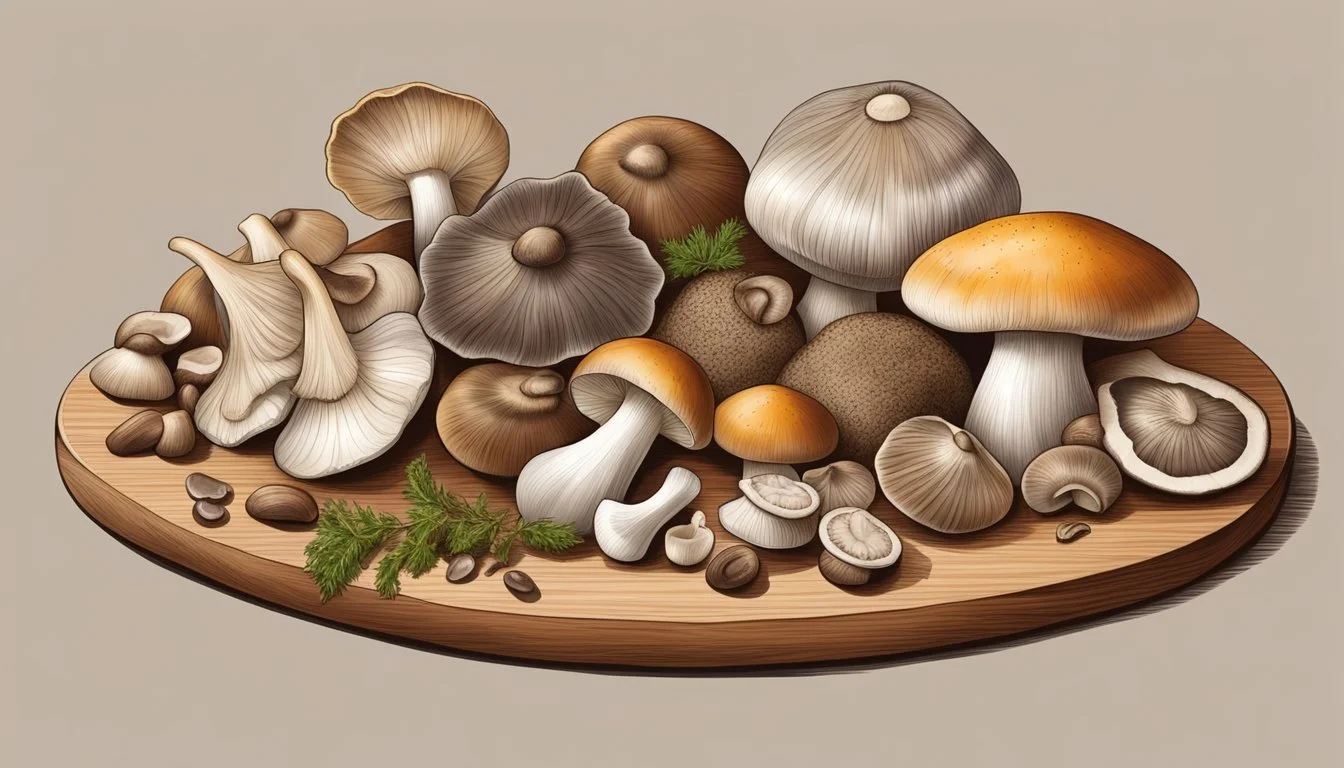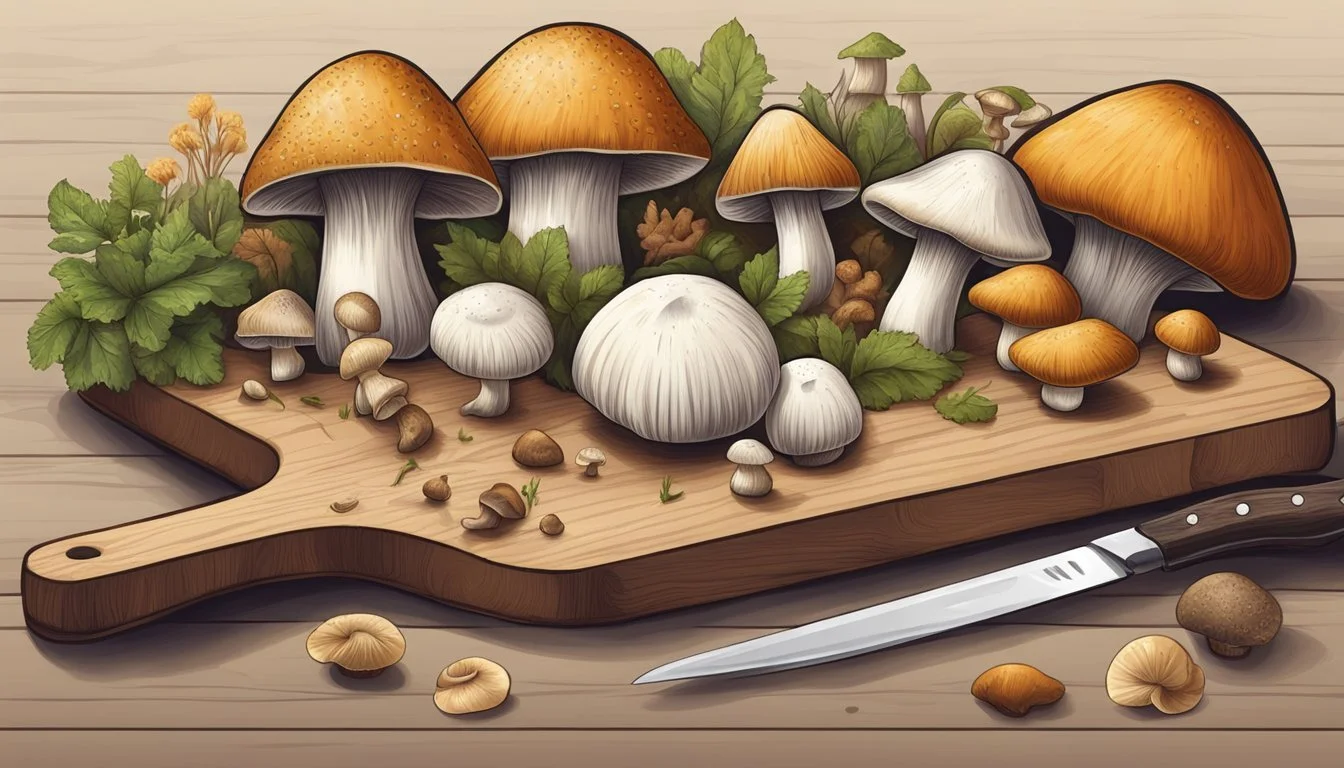Cremini Mushrooms Substitutes
Top Alternatives for Your Recipes
Cooking with cremini mushrooms is a delight due to their earthy flavor and versatile nature. When you can't find cremini mushrooms, several excellent substitutes can seamlessly fit into your recipes. Some top alternatives include porcini, shiitake, and portobello mushrooms, each bringing a unique texture and richness to dishes.
Porcini mushrooms are well-known for their robust aroma and delicate taste. They can be sauteed, roasted, or stewed, making them a versatile choice. Shiitake mushrooms, with their fleshy texture and light brown color, closely match cremini mushrooms in appearance and flavor, enhancing various culinary creations.
Portobello mushrooms, larger and meatier, are another great option. Their deep, savory profile can elevate any meal, especially when grilled or baked. With these substitutes, cooking without cremini mushrooms remains an enjoyable and tasty experience.
Understanding Cremini Mushrooms
Cremini mushrooms, also known as Agaricus bisporus, are celebrated for their earthy flavor and meaty texture. They are commonly used in various culinary applications, adding depth and richness to numerous dishes.
Characteristics of Cremini Mushrooms
Cremini mushrooms, often referred to as baby bellas, are a type of Agaricus bisporus. These mushrooms are the same species as white button mushrooms and portobello mushrooms but are in a more mature state than white buttons and less mature than portobellos.
Creminis have a darker brown color and a firmer texture compared to their white button counterparts. Their umbrella-shaped caps are usually one to two inches wide. These mushrooms offer a robust and earthy flavor, which is more intense than that of white button mushrooms.
Being a low-calorie food, they are an excellent source of essential nutrients. They contain B vitamins, selenium, potassium, and copper. This nutrient profile makes them a healthy addition to various dishes without significantly altering the caloric content.
Culinary Uses of Cremini Mushrooms
Cremini mushrooms are highly versatile in the kitchen. Their earthy flavor and meaty texture make them popular for sautéing, roasting, and grilling. They are also a common ingredient in soups, stews, and sauces, where their robust flavor adds depth.
One simple preparation method is to sauté creminis with olive oil, garlic, and herbs. They can be added to salads for a richer flavor or used as a pizza topping. Their firm texture holds up well in stir-fries and casseroles, making them suitable for prolonged cooking processes.
Cremini mushrooms also pair excellently with meats, grains, and vegetables. They can be stuffed with cheese or breadcrumbs and baked for a delicious appetizer. Their ability to absorb flavors makes them a favorite in marinated dishes and they are often included in vegetarian recipes as a meat substitute due to their satisfying texture and taste.
Mushroom Substitutes
When looking for substitutes for cremini mushrooms, several options offer similar textures and flavors. In dishes where umami flavor and meaty texture are essential, each substitute brings its unique characteristics.
Portobello Mushrooms as Substitutes
Portobello mushrooms are often considered the best substitutes for cremini mushrooms. They share a similar dense texture and rich flavor profile. Portobellos are mature cremini mushrooms, so they have a more robust umami taste.
Their large size makes them suitable for grilling, stuffing, or using as a meat replacement in vegetarian dishes. The earthy flavor and versatility of portobello mushrooms make them an excellent alternative in recipes calling for creminis.
Shiitake Mushrooms: A Flavorful Alternative
Shiitake mushrooms bring an intense umami flavor to dishes, making them a great cremini substitute. Their slightly chewy texture adds a desirable element to soups, stir-fries, and stews.
Shiitakes are particularly effective in Asian cuisines and pair well with soy sauce and ginger. Though their caps are often used, remember that the stems can be tough and are usually removed before cooking. Their distinctive taste elevates any dish requiring a deeper mushroom flavor.
Oyster Mushrooms: Texture and Taste
Oyster mushrooms provide a delicate flavor and a slightly chewy texture. They are lighter in flavor compared to cremini mushrooms but offer a unique component to various dishes.
Perfect for stir-fries and soups, oyster mushrooms soak up sauces well and complement a wide range of seasonings. Their fan-shaped caps and tender flesh make them a visual and textural delight in culinary creations.
Porcini Mushrooms: A Rich Substitute
Porcini mushrooms are known for their rich aroma and strong umami flavor. They are excellent in risotto, pasta, and stews. Porcinis are often used dried and rehydrated, which intensifies their flavor.
Their robust taste and slightly nutty flavor profile make them a powerful substitute for cremini mushrooms. Available fresh and dried, porcini mushrooms add depth to any recipe, enhancing the overall dining experience.
Common White Button Mushrooms
Common white button mushrooms are a versatile and easy-to-find substitute for cremini mushrooms. Although milder in flavor, they are essentially the younger version of creminis, making them a compatible alternative.
Their texture is firm, and they perform well in various cooking methods like sautéing, grilling, and roasting. White button mushrooms are a practical and economical choice, fitting seamlessly into most recipes requiring cremini mushrooms.
Non-Mushroom Alternatives
Non-mushroom substitutes can provide similar textures and flavors to cremini mushrooms without the use of fungi. Popular options include eggplant, tofu, and tempeh, each offering unique properties suitable for various culinary applications.
Eggplant: A Meaty Replacement
Eggplant is an excellent replacement for cremini mushrooms due to its meaty texture and ability to absorb flavors. When cooked, it becomes tender and can replicate the mouthfeel of mushrooms in many recipes. Eggplant works well in savory dishes, from stir-fries to casseroles.
To prepare, slice or cube the eggplant, season it, and then cook it through methods like roasting, grilling, or sautéing. It excels particularly in dishes that require substantial bite, making it an ideal plant-based meat substitute. The flexibility in seasoning also means it can be customized to suit different flavor profiles.
Tofu: Versatile and Flavorful
Tofu, made from soybeans, is another versatile substitute. Its sponge-like quality allows it to soak up sauces and marinades effectively, making it suitable for various dishes where mushrooms might be used.
There are different types of tofu, such as silken, soft, firm, and extra-firm. For a mushroom substitute, firm or extra-firm tofu is recommended as it holds its shape better under high heat. Tofu can be grilled, baked, sautéed, or even fried. Its neutral flavor makes it easy to season and match to any dish, providing a good texture that can mimic the satisfying mouthfeel of cremini mushrooms.
Tempeh: Nutty and Firm
Tempeh, a fermented soy product, offers a firm and nutty alternative to mushrooms. It has a more rigid texture compared to tofu, making it suitable for dishes requiring a robust ingredient that holds up well in cooking. Tempeh's fermentation process gives it a unique, slightly tangy flavor profile.
To use tempeh as a substitute, it can be sliced, crumbled, or cubed. It is excellent in stir-fries, tacos, and even as a meat substitute in burgers. Marinating tempeh before cooking can enhance its flavor, making it a delicious addition to various savory dishes.
Selecting the Right Substitute
When choosing substitutes for cremini mushrooms, it's crucial to consider the role they play in the recipe as well as their texture and flavor. Alternatives may vary depending on whether the mushrooms are to be cooked or used fresh.
For Recipes Requiring Cooked Mushrooms
White mushrooms stand out as the most practical substitute. They provide a similar texture and maintain their form well during cooking, making them suitable for sautéing, roasting, and adding to casseroles.
Portobello mushrooms offer a meaty, more pronounced savory flavor. They are excellent for hearty dishes like risottos, sauces, and soups. Their larger size also makes them ideal for stuffing or using in stir-fries.
Porcini mushrooms bring a stronger aroma and delicate flavor. These are perfect for dishes where a rich, umami taste is desired, such as in soups and sauces. They work well in stews, adding a depth of flavor.
Alternatives for Fresh Mushroom Use
Eggplant is a versatile option rich in nutrients like fiber, vitamins A, B1, and B6, and minerals. It can mimic the texture of fresh mushrooms in salads and sides when diced finely.
Zucchini offers a softer texture which suits raw applications in salads or as pizza toppings. It's easily sliced and can substitute for mushrooms in fresh dishes where a mild flavor is acceptable.
Button mushrooms, similar to white mushrooms, are another great fresh-use alternative. They have a milder flavor but still provide the necessary texture and appearance for recipes like salads and sides.
When choosing a substitute, always consider the specific characteristics needed for your recipe to ensure the best culinary outcome.
Nutritional Considerations
When choosing substitutes for cremini mushrooms, it's essential to understand the nutritional profiles and health benefits of these alternatives. Both mushrooms and non-mushroom substitutes offer various nutrients that can support overall well-being.
Health Benefits of Mushroom Substitutes
Many mushroom substitutes are packed with essential nutrients. Portobello mushrooms are rich in protein, potassium, and riboflavin, contributing to muscle health and metabolic processes. Shiitake mushrooms offer strong immune system support due to high levels of selenium, zinc, and vitamins B6 and D.
Eggplants are an excellent non-mushroom substitute. They provide antioxidants, particularly nasunin, which helps reduce free radical damage. Seitan is a favored choice for its high protein content, making it ideal for vegetarian and vegan diets.
Caloric and Macronutrient Comparisons
Comparing the calorie and macronutrient profiles of substitutes is crucial for dietary planning. Portobello mushrooms contain about 22 calories per 100 grams, with low carbs and moderate protein. Button mushrooms are even lower in calories at 15 per 100 grams but provide excellent micronutrients like B-vitamins and copper.
Eggplant has about 25 calories per 100 grams, mostly from carbs, with minimal fat and protein. Seitan stands out for its high protein content of approximately 75 grams per 100 grams, making it significantly higher in calories at 370 per 100 grams due to its dense nutritional profile.
These nutritional insights can guide better dietary choices depending on specific nutritional needs and preferences.
Additional Tips for Substituting
When substituting cremini mushrooms, choosing alternatives with similar umami flavors and a firm texture can greatly influence the dish's outcome.
Consider Texture: Firm vegetables like eggplant or zucchini can mimic the texture of cremini mushrooms. Eggplant particularly offers a savory flavor and can be sliced or diced similarly.
Use Mushroom Substitutes: Other mushrooms such as Portobello, button mushrooms, and porcini are excellent options. Portobellos provide a stronger flavor while button mushrooms are milder but still offer a similar texture.
Add Umami Flavors: To compensate for the umami profile of cremini mushrooms, incorporate ingredients like soy sauce, tamari, or miso. These can enhance the savory aspect of the dish.
Enhance with Herbs and Spices: Fresh or dried herbs like thyme, rosemary, or oregano add depth. Garlic and onion powder are also useful in imitating mushroom flavors.
Ingredient Substitute Suggestion Attributes Cremini Mushrooms Eggplant Firm, nutritious Cremini Mushrooms Porcini Mushrooms Strong aroma, delicate Cremini Mushrooms Seitan Meaty texture, protein-rich
Adjust Cooking Methods: Sauté, roast, or stew the substitutes as you would with cremini mushrooms. Use olive oil to enhance the natural flavors and textures.
Manage Moisture: Mushrooms release water when cooked. If using drier substitutes like seitan or tofu, you might need to add a bit of water or broth to the dish.
By focusing on these factors, substitutions can be more seamless and maintain the dish's integrity.







